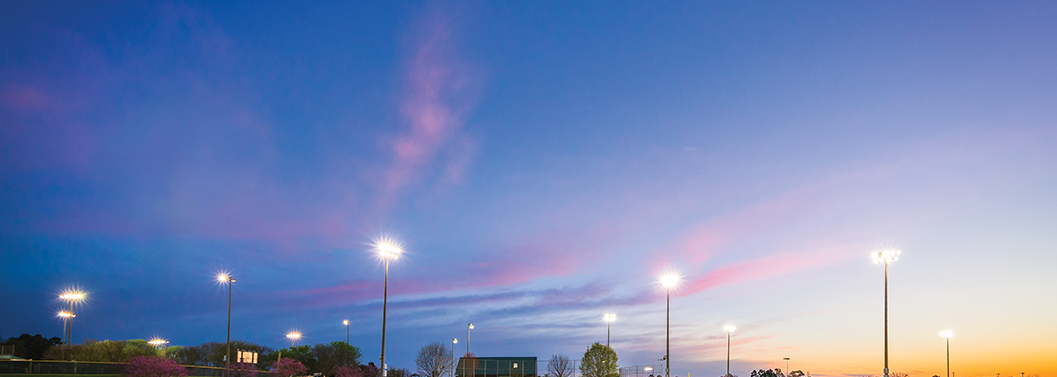PODCAST
NESFMA – Snow Mold: Questions Answered
PODCAST: PLAY IN NEW WINDOW | DOWNLOAD
Podcast (podcast_associations): Play in new window | Download (Duration: 6:58 — 9.6MB) | Embed
Subscribe Email | TuneIn | RSS
New England Blade – Pamela Sherratt
Q: I have received two questions about snow mold disease recently: Should we apply a fungicide if we plan on covering the field with a growth blanket this winter and if so, when? And we can’t spray a fungicide before winter for snow mold, but if we see damage from snow mold on our young ryegrass next spring, what should we do?
A: Quick snow mold re-cap: snow mold is a common disease problem in northern states during winter and early spring. Microdochium patch/pink snow mold is probably the most common snow mold that develops during a snow event. In the absence of snow, the disease is referred to as fusarium patch. Typhula blight/gray snow mold is the second most common snow mold. In the case of Typhula blight prolonged snow cover is required for disease development. Perennial ryegrass and annual ryegrass are particularly susceptible to snow mold, especially on immature, lush, succulent stands of grass seeded in the fall. If snow mold has been an issue in the past, it’s wise to be prepared.
The growth blanket will provide environmental conditions not dissimilar to prolonged snow cover, making the turf more susceptible to snow mold. So yes, if you are planning on putting a growth blanket on a field over the winter period it is advisable to apply a preventative fungicide before covering. I assume the reason for covering the field is that there are games scheduled very early in the spring. Growth covers that are permeable (i.e. breathable) are more beneficial than impermeable ones. Impermeable covers increase the temperature and humidity under the cover and so increase the likelihood of snow mold. Making one application of preventative fungicide just before covering the field, or just before the first snow event of the season, has been shown to be more effective than making fungicide applications earlier in the fall. Also, a liquid application is typically more effective than a granular application.
While it is widely accepted that a preventative fungicide is the most effective way to prevent snow mold problems, there are other turf maintenance practices that will help minimize snow mold damage and boost the turf plant going into the winter season. These practices are especially important if there are pesticide restrictions, and a fungicide application can’t be made. There really aren’t any biological options for snow mold prevention or control.
Snow mold issues are exacerbated if the grass is laying over, is covered in leaves, or has excessive thatch. Cultural practices that minimize thatch and surface debris are important, as is mowing just slightly lower than normal during the last mow of the season. The goal is to enter the winter season with a short, clean sward.
A common practice on cool-season turf is to apply a late- season fertilizer application with a quick release source of nitrogen at the end of the growing season, when the grass is still green, but it has stopped growing. This application is not the same as a fall fertilizer application when turf is still growing. Applying quick-release sources of nitrogen in the fall should be avoided as it leads to lush, weak plants going into the winter season. The crucial difference is that the late-season application is made when top/leaf growth has stopped but soil temperatures are still warm enough for nitrogen absorption. The misconception is that the late-season fertilizer application encourages or increases the severity of snow mold disease, but it does not. The late-season fertilizer application will help boost turf quality and green-up the following spring, without excessive top growth. Some care should be taken however, to make sure that the fertilizer application rate is not too high, particularly on sand-based fields, to prevent nitrogen leeching.
Another pre-winter practice could include applications of the plant growth regulator trinexapac-ethyl. Applying trinexapac- ethyl between July and September does not necessarily reduce the incidence of snow mold, but it does increase levels of fructan in the crown of the turf plant, which could improve winter survival and enhance turf quality and green-up the following spring.
Regarding the second question, prolonged rainy periods and cool to moderate temperatures in early spring are ideal conditions to prolong the disease, so it may linger until warmer and dryer weather arrives. A snow mold recovery plan would include: check damaged areas by looking at the crowns to see if they are alive and producing new leaves; lightly rake the grass to promote air circulation and encourage light to penetrate the canopy, encouraging new shoot and leaf development. You want to dry the sward. If there is any dead and/or matted leaf tissue, rake and remove it immediately. In the case of dead turfgrass, renovation of the site would be recommended as soon as possible. Removing diseased and dead material in the spring is an essential part of reducing the source of inoculum on the field. Plan to overseed with turfgrass varieties showing greater genetic resistance to snow mold infection.
Fungicide applications at this time will not eliminate the disease from affected areas but only protect non-infected grass. On high profile-turf an application of fungicide may be warranted.
Pamela Sherratt is a Sports Turf Specialist at the Ohio State University. Connect with Pam at sherratt.1@osu.edu. This article is reprinted with the author’s permission.

